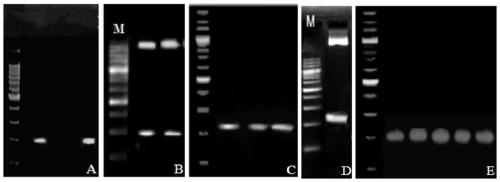GhAGD13 gene relevant with resistance of verticillium wilt and application of GhAGD13 gene
A Verticillium wilt and resistance technology, applied in the fields of application, genetic engineering, plant genetic improvement, etc., can solve the problems of agricultural production loss, loss of resistance, lack of genetic resources for upland cotton resistance to Verticillium wilt, etc.
- Summary
- Abstract
- Description
- Claims
- Application Information
AI Technical Summary
Problems solved by technology
Method used
Image
Examples
Embodiment 1
[0048] Example 1. Acquisition and functional verification of GhAGD13 gene in upland cotton
[0049] 1. Acquisition of GhAGD13 gene in upland cotton
[0050] 1. Planting of cotton materials:
[0051] Cotton (the cotton variety is Zhongzhi Cotton KV3 (source see above), Gossypium hirsutum L.)) seeds are delinted with sulfuric acid. Select plump cotton seeds, soak them in 70% alcohol for 5 minutes, and then use 5% H 2 o 2 Soak for 2 hours, rinse with sterile water for 3 times, then soak in sterile water for 5 hours to accelerate germination. The seeds are planted in flower pots with a diameter of 11 cm (the ratio of nutrient soil to vermiculite is 2:1), placed in a greenhouse for cultivation, and the cultivation conditions are set at a temperature of 26°C, 16 hours of light, 8 hours of darkness, and a relative humidity of 70%. .
[0052] 2. Total RNA extraction:
[0053] Fresh leaves were collected to extract total cotton RNA. For RNA extraction, refer to the instructions ...
PUM
 Login to View More
Login to View More Abstract
Description
Claims
Application Information
 Login to View More
Login to View More - R&D
- Intellectual Property
- Life Sciences
- Materials
- Tech Scout
- Unparalleled Data Quality
- Higher Quality Content
- 60% Fewer Hallucinations
Browse by: Latest US Patents, China's latest patents, Technical Efficacy Thesaurus, Application Domain, Technology Topic, Popular Technical Reports.
© 2025 PatSnap. All rights reserved.Legal|Privacy policy|Modern Slavery Act Transparency Statement|Sitemap|About US| Contact US: help@patsnap.com



